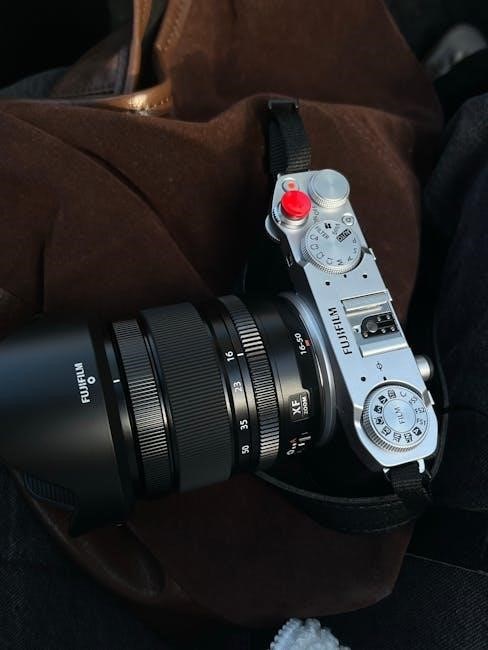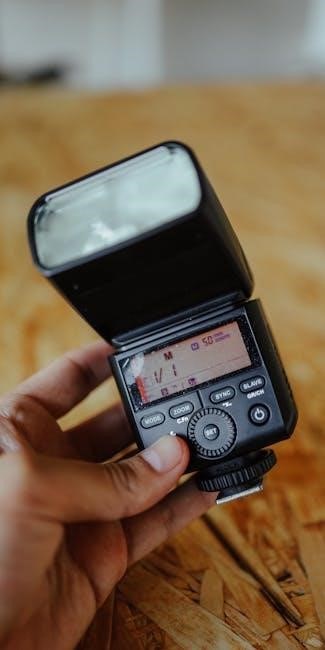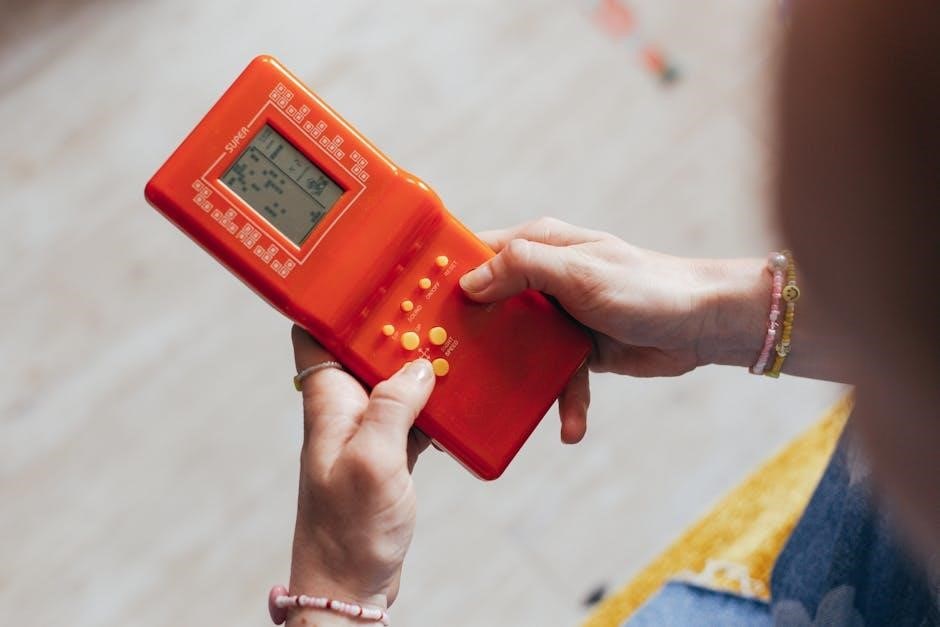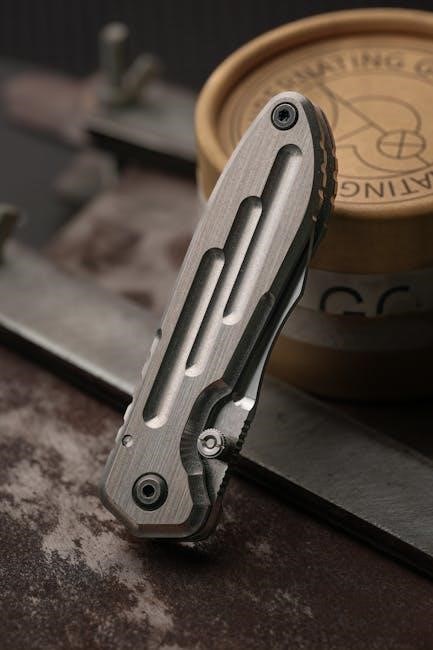Welcome to the Rhythm P2 Portable Oxygen Concentrator Manual. This guide provides essential information for safe and effective use, covering setup, operation, and maintenance.
Designed for portability and convenience, the Rhythm P2 delivers high-concentration oxygen for supplemental use. Please read this manual carefully before operating the device.
1.1 Overview of the Rhythm P2 Portable Oxygen Concentrator
The Rhythm P2 Portable Oxygen Concentrator is a compact, lightweight device designed for on-the-go use, providing high-concentration oxygen through a nasal cannula. It is ideal for patients needing supplemental oxygen during daily activities and travel.
Featuring a user-friendly LC Display and simple control functions, the P2 ensures easy operation. This manual provides detailed guidance on setup, operation, and maintenance to ensure safe and effective use of the device for supplemental oxygen therapy.
1.2 Importance of Reading the Manual
Reading the Rhythm P2 Portable Oxygen Concentrator Manual is essential for safe and effective use. It provides critical information on setup, operation, and maintenance, ensuring optimal performance and user safety.
Understanding the guidelines helps prevent device malfunction and potential health risks. Note that this device is not intended for life-sustaining use. Always consult a healthcare professional if you have questions or concerns.

Key Features of the Rhythm P2 Portable Oxygen Concentrator
The Rhythm P2 offers a lightweight, compact design, advanced oxygen delivery system, and extended battery life, making it ideal for portable use and meeting various oxygen needs effectively.
2.1 Design and Portability
The Rhythm P2 is designed with a compact and lightweight structure, weighing only 4.7 pounds, making it easy to carry. Its ergonomic design ensures comfort during travel or daily use. The device features a sleek, modern appearance with a built-in handle for convenient portability. Measuring 7.8 inches in height and 4.3 inches in width, it fits neatly into carry-on bags or backpacks. This portability allows users to maintain an active lifestyle without being confined by traditional oxygen therapy systems. Its compact size and durability make it ideal for both home and outdoor use.
2.2 Battery Life and Extended Use
The Rhythm P2 offers a reliable battery life, providing up to 6 hours of continuous use on a single charge. Its rechargeable lithium-ion battery ensures extended portability, making it suitable for travel. For longer trips, users can carry additional batteries or use a DC power adapter in vehicles. The device also features a low-battery alert, ensuring users are notified when charging is needed. This design enhances flexibility, allowing uninterrupted oxygen therapy throughout the day, even without access to an electrical outlet.
2.3 LCD Display and Control Functions
The Rhythm P2 features an intuitive LCD display that provides real-time information on oxygen flow rate, battery level, and operational status. The user-friendly interface allows easy adjustment of settings using the control buttons. The display also shows alerts for low battery, high flow rate, or system errors. This clear and accessible design ensures users can monitor and manage their oxygen therapy effectively, promoting independence and confidence in daily use. The LCD screen is bright and easy to read, even in low-light conditions, making it a vital tool for seamless operation.

Technical Specifications of the Rhythm P2
The Rhythm P2 delivers up to 850ml/min of oxygen, with concentration levels between 88-96%. It weighs 4.9lbs, measures 7.5×4.5×3.5 inches, and operates at 38dB.
3.1 Oxygen Flow Rate and Concentration Levels
The Rhythm P2 provides a continuous oxygen flow rate of up to 850ml/min, with adjustable settings to meet individual needs. It delivers oxygen concentrations between 88-96%, ensuring therapeutic efficacy. The device automatically adjusts to maintain consistent levels, even during movement. This range supports users with varying oxygen prescriptions, promoting optimal health and comfort. The precise flow rate and concentration are monitored internally to ensure reliability and safety, making it suitable for both home and portable use.
3.2 Dimensions and Weight
The Rhythm P2 Portable Oxygen Concentrator is designed for portability, measuring 6.5 inches in height, 4.5 inches in width, and 8.5 inches in length. It weighs approximately 4.5 pounds, making it lightweight and easy to carry. These compact dimensions allow for convenient travel without compromising performance. The unit is small enough to fit in a bag or purse, ensuring users can maintain their active lifestyle. Its lightweight design reduces strain during extended use, enhancing overall usability and portability.
3.4 Expected Life of Key Components
The molecular sieve beds in the Rhythm P2 are designed to last approximately 2,000 hours under normal use. The intake filter should be replaced every 1-2 months, depending on usage and environmental conditions. The battery lifespan is estimated at 2-3 years, with degradation expected over time. Regular maintenance, such as cleaning and replacing filters, can extend the life of these components. Proper care ensures optimal performance and reliability of the device, aligning with the manufacturer’s guidelines for longevity.

Safety Precautions and Warnings
Always use the Rhythm P2 as prescribed by your healthcare provider. Keep it away from flammable materials and avoid modifying the device. Ensure proper ventilation.
4.1 General Safety Guidelines
To ensure safe operation of the Rhythm P2, always use it as prescribed by your healthcare provider. Avoid exposure to extreme temperatures or humidity. Keep the device away from flammable materials and avoid smoking near it. Regularly inspect the nasal cannula, tubing, and power cord for damage. Do not modify or tamper with the concentrator. Ensure proper ventilation in the room to prevent oxygen buildup. If the device alarms, turn it off and contact a healthcare professional. Always follow the manufacturer’s guidelines for operation and maintenance;
4.2 Contraindications for Use
The Rhythm P2 is not suitable for all medical conditions. It should not be used by patients requiring high-flow oxygen therapy exceeding the device’s capacity. Individuals with severe respiratory failure or those dependent on continuous high-concentration oxygen must use it under medical supervision. The device is not intended for patients requiring oxygen concentrations greater than 95%. It is also contraindicated for use in hyperbaric oxygen therapy or environments with high oxygen levels. Always consult your healthcare provider to confirm suitability for your condition.
4.3 Important WARNINGS for Users
Always use the Rhythm P2 in well-ventilated areas to avoid oxygen accumulation. Never use the device near open flames, sparks, or hot surfaces, as oxygen supports combustion. Avoid using the device in wet conditions or with damaged power cords. Do not modify or tamper with the device, as this may cause malfunction. Use the device only as prescribed by your healthcare provider. Avoid using the Rhythm P2 at high altitudes without medical guidance. Keep the device away from children and pets. Never use the device during MRI or in environments with high magnetic fields.

Setting Up and Operating the Rhythm P2
Unpack, plug in, and ensure all components are securely connected. Use the control panel to set your prescribed oxygen flow rate and monitor operation. Refer to the manual for detailed startup and adjustment instructions to ensure safe and effective use.
5.1 Unpacking and Assembly
Begin by carefully unpacking the Rhythm P2 Portable Oxygen Concentrator and its accessories. Ensure all components are included and free from damage. Gently remove the device from its packaging and place it on a flat surface. Familiarize yourself with the unit, including the control panel, oxygen outlet, and battery compartment. Follow the manual’s guidance to assemble any detachable parts, such as the nasal cannula or external battery. Double-check that all connections are secure before proceeding to operation.
5.2 Connecting the Nasal Cannula
To connect the nasal cannula, locate the oxygen outlet on the Rhythm P2. Remove any protective cap covering the port. Take the nasal cannula and insert the connector end firmly into the outlet until it clicks. Ensure the connection is secure to maintain proper oxygen flow. Gently adjust the cannula to fit comfortably under your nose. Always check for a snug fit and verify airflow before use. This ensures optimal oxygen delivery and comfort during therapy.
5.3 Turning On and Adjusting Flow Rate
To turn on the Rhythm P2, press and hold the power button located on the top of the device until it powers up. Once on, the LCD display will show the current flow rate. Use the + and ⎯ buttons to adjust the flow rate, ensuring it matches your prescribed setting. The device will automatically adjust to maintain consistent oxygen output. Always verify the flow rate on the display and ensure it aligns with your healthcare provider’s recommendations for safe and effective therapy.

Maintenance and Care Instructions
Regular maintenance ensures optimal performance. Clean exterior surfaces with a soft cloth and mild detergent, avoiding harsh chemicals. Check the intake filter regularly and store the device in a dry, cool place. Proper care prolongs lifespan and ensures safe, effective oxygen delivery.
6.1 Cleaning the Device
Cleaning the Rhythm P2 is essential for maintaining performance and hygiene. Use a soft, damp cloth to wipe the exterior, avoiding harsh chemicals. Gently clean the vents and controls with a dry cloth. Never submerge the device in water or use abrasive materials, as this may damage components. Regular cleaning prevents dust buildup and ensures proper airflow. Always allow the device to dry completely before use. Cleaning should be done weekly or as needed to maintain optimal function and user safety.
6.2 Replacing the Intake Filter
The intake filter must be replaced regularly to ensure optimal performance. Locate the filter on the rear or side of the device. Turn off the concentrator and unplug it. Gently pull out the filter by releasing the latch or clip. Insert the new filter, aligning it properly, and secure it with the latch. Replace the filter every 2-3 months, depending on usage. Clean or replace it more often if exposed to dusty environments. Always use Rhythm P2-compatible filters for best results. Dispose of the old filter responsibly.
6.3 Servicing the Molecular Sieve Beds
Servicing the molecular sieve beds is essential for maintaining the Rhythm P2’s performance. These beds adsorb nitrogen to concentrate oxygen. Over time, they may lose efficiency. Every 1-2 years, or as indicated by the manual, inspect and clean or replace them. Turn off the device and unplug it before servicing. Refer to the manual for specific instructions, as improper handling can reduce effectiveness. If unsure, contact Rhythm Healthcare for professional assistance. Regular servicing ensures consistent oxygen purity and flow rate, keeping the device functioning at its best.

Troubleshooting Common Issues
This section helps resolve issues like error codes, low oxygen flow, and battery problems. Follow step-by-step solutions to restore your Rhythm P2 to optimal operation quickly.
7.1 Identifying and Resolving Error Codes
The Rhythm P2 displays error codes like E1, E2, or E3 on its LCD screen. These codes indicate issues such as high temperature, low oxygen flow, or sensor malfunctions. To resolve, turn the device off, wait 30 seconds, and restart. Check nasal cannula connections and ensure proper ventilation. If errors persist, refer to the manual for specific code meanings or contact Rhythm Healthcare support. Regular maintenance can help prevent recurring issues and ensure reliable performance.
7.2 Addressing Low Oxygen Flow
If the Rhythm P2 indicates low oxygen flow, check for kinked or blocked nasal cannulas. Ensure the device is in a well-ventilated area and not exposed to high humidity. Verify the intake filter is clean and free of debris. If issues persist, reset the device by turning it off and on. Check the molecular sieve beds for saturation and replace if necessary. Consult the manual for flow rate calibration or contact Rhythm Healthcare support for assistance. Regular filter maintenance can prevent such issues.
7.3 Managing Battery Charging Problems
If the Rhythm P2 battery fails to charge, ensure the charger is properly connected to both the device and a functioning power source. Check for damage or dirt on the charging port and clean it gently with a soft cloth. Avoid charging in extreme temperatures. If issues persist, reset the device by turning it off and on. Replace the battery if it no longer holds a charge. Use only Rhythm Healthcare-approved chargers and batteries for compatibility. Contact customer support if problems continue after these steps.

Accessories and Compatibility
The Rhythm P2 includes essential accessories like nasal cannulas and carrying bags. Optional extras, such as longer tubing or car chargers, enhance portability. Ensure all replacement parts are Rhythm Healthcare-approved for optimal performance and safety.
8.1 Included Accessories
The Rhythm P2 Portable Oxygen Concentrator comes with essential accessories to ensure convenient and effective use. These include a lightweight nasal cannula, a durable carrying bag for easy transport, and a rechargeable lithium-ion battery. Additionally, the device is supplied with AC and DC power cords for charging at home or in a vehicle. A user manual is also provided for guidance on operation and maintenance. All included accessories are designed to enhance portability and usability while maintaining safety and performance standards.
8.2 Optional Accessories for Enhanced Use
Optional accessories for the Rhythm P2 Portable Oxygen Concentrator include an extended-life battery for longer use, a cart with wheels for easier mobility, and additional nasal cannulas in various sizes. A car charger adapter is available for convenient charging on the go. Users can also purchase a protective cover to shield the device from dust and scratches. These optional accessories aim to enhance portability, comfort, and durability, ensuring a seamless experience for users with specific needs or preferences.
8.3 Compatible Replacement Parts
Compatible replacement parts for the Rhythm P2 include the nasal cannula, replacement intake filters, and molecular sieve beds. These parts are designed to maintain optimal performance and ensure the device functions correctly. Users should only use authorized replacement parts to guarantee safety and efficiency. Regularly replacing worn or damaged components is essential for prolonging the device’s lifespan. Always refer to the official Rhythm Healthcare website or authorized distributors for genuine replacement parts to avoid compatibility issues.

User Manual and Additional Resources
The user manual provides comprehensive guidance for operating the Rhythm P2. Additional resources include downloadable guides, troubleshooting tips, and access to customer support for assistance.
9.1 Downloading the Full Manual
The full Rhythm P2 manual is available for download on the official Rhythm Healthcare website. Visit the site, navigate to the support section, and select your device model.
Click on the manual link to download the PDF. Ensure your device has a PDF reader installed to view the document.
Save the manual for easy access and reference. Regularly check for updates to ensure you have the latest version.
Contact customer support if you encounter any issues during the download process.
9.2 Quick Start Guide for New Users
The Quick Start Guide provides essential steps for first-time users of the Rhythm P2. Begin by unpacking the device and ensuring all accessories are included.
Connect the nasal cannula to the oxygen port and power on the concentrator. Use the control panel to adjust the flow rate as prescribed.
The LCD display will show the current settings and battery life. Familiarize yourself with the alarm indicators and basic operation.
This guide is designed to help you start using the device confidently and efficiently.
9.3 Online Support and Customer Service
Rhythm Healthcare offers comprehensive online support and customer service for the P2 Portable Oxygen Concentrator. Users can access FAQs, troubleshooting guides, and downloadable resources on the official website.
For direct assistance, contact the support team via phone, email, or live chat.
Dedicated representatives are available to address questions, concerns, or technical issues promptly.
Visit the Rhythm Healthcare website for more details on support options and to connect with a representative.

Warranty and Support Information
The Rhythm P2 comes with a comprehensive warranty covering parts and labor for a specified period.
For details, contact Rhythm Healthcare or refer to the warranty section in the manual.
10.1 Warranty Coverage Details
The Rhythm P2 Portable Oxygen Concentrator is backed by a comprehensive warranty program.
The standard warranty typically covers the device for 3 years, including parts and labor, while accessories may have shorter coverage periods.
The warranty is void if the device is misused, tampered with, or modified without authorization.
For specific details, refer to the warranty section in the manual or contact Rhythm Healthcare customer support.
Extended warranty options may be available for purchase.
10.2 Contacting Rhythm Healthcare Support
For assistance with your Rhythm P2 Portable Oxygen Concentrator, contact Rhythm Healthcare Support.
Call their dedicated customer service hotline, available Monday-Friday, 8 AM-6 PM EST.
Email inquiries can be sent to support@rhythmp2.com, and responses are typically within 24 hours.
Visit their official website at www.rhythmp2.com for live chat support or to submit a service request.
Representatives are trained to address technical, warranty, and general inquiries in multiple languages;
10.3 Extended Warranty Options
The Rhythm P2 Portable Oxygen Concentrator offers extended warranty options for added peace of mind.
Users can purchase a 1-, 2-, or 3-year extended warranty plan through Rhythm Healthcare.
These plans cover repairs and replacements beyond the standard warranty period.
For details, visit the official website or contact customer support.
Extended warranties must be purchased within the original warranty period.
Terms and conditions apply, so review the warranty agreement carefully before purchasing.
The Rhythm P2 Portable Oxygen Concentrator is a valuable resource for users seeking independence and mobility. Proper use and maintenance ensure optimal performance and health benefits.
11.1 Final Tips for Effective Use
For optimal performance, always adhere to the recommended usage guidelines and maintenance schedules. Regularly inspect the device and accessories for damage or wear. Use only approved replacement parts to ensure safety and efficiency. Keep the concentrator clean and dry, avoiding exposure to extreme temperatures. Monitor oxygen flow settings and adjust as prescribed by your healthcare provider. Store the device properly when not in use to maintain its longevity. By following these tips, you can maximize the benefits and reliability of your Rhythm P2 Portable Oxygen Concentrator.
11.2 Importance of Regular Maintenance
Regular maintenance is crucial to ensure the Rhythm P2 operates efficiently and safely. Cleaning the device, replacing filters, and servicing components as recommended prevents breakdowns and ensures optimal oxygen delivery. Neglecting maintenance can lead to reduced performance, safety risks, and shorter device lifespan. Always follow the manufacturer’s guidelines for maintenance schedules and procedures. Proper care ensures the concentrator remains reliable and continues to meet your oxygen therapy needs effectively over time.